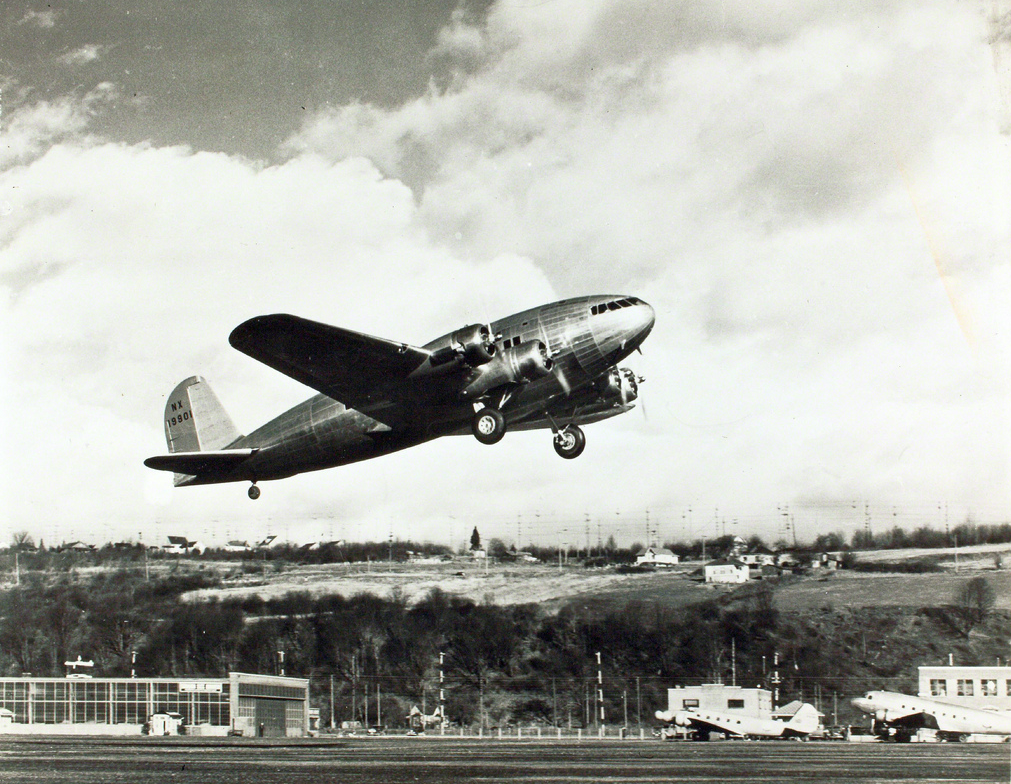
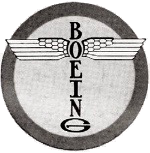 18 March 1939: At 12:57 p.m., Pacific Standard Time (19:47 G.M.T.), the Boeing Model S-307 Stratoliner, NX19901, took off from Boeing Field, Seattle, Washington, on Test Flight No. 19. Julius Augustus Barr was the pilot in command.
18 March 1939: At 12:57 p.m., Pacific Standard Time (19:47 G.M.T.), the Boeing Model S-307 Stratoliner, NX19901, took off from Boeing Field, Seattle, Washington, on Test Flight No. 19. Julius Augustus Barr was the pilot in command.
The S-307, Boeing serial number 1994, was a prototype four-engine, pressurized commercial airliner. It had first flown on 31 December 1938, with Boeing’s Chief of Flight Test, Edmund Turney (“Eddie”) Allen, as first pilot (the Pilot in Command), and Julius Barr as his copilot. Allen had flown the first eighteen flights. “The performance of aircraft NX 19901 on flights prior to Test Flight No. 19 had either met or exceeded the manufacturer’s estimates.”
Julius Barr was employed by Boeing as a test pilot, 16 November 1938. Following Flight Test No. 15, Allen approved Barr to act as first pilot on the Model 307. He first served as the pilot in command of NX19901 on 21 January 1939. This was a taxi test, with the Stratoliner never leaving the ground. Barr first flew the airplane nearly two months later, 16 March 1939, with copilot Earl Alvin Ferguson. Barr made two more flights on 17 March. Harlan Hull, Chief Pilot of Transcontinental and Western Air, Inc., flew as copilot.
At takeoff on 18 March 1939, Barr had only 2 hours, 6 minutes as pilot in command of the Boeing 307; and 17 hours, 55 minutes as second in command. He had flown as an observer aboard NX19901 for 1 hour, 52 minutes.
There were ten persons on board the Stratoliner for Test Flight No. 19. In addition to Julius Barr as P.I.C., the designated copilot was Earl Ferguson. There were two alternate copilots, Harlan Hull and Benjamin J. Pearson, an assistant sales manager for Boeing. Ralph LaVenture Cram was first aerodynamcist, assisted by John Kylstra. William C. Doyle served as oscillograph operator, and Harry T. West, Jr., was the engineering officer. These were all Boeing employees. Pieter Guillonard, technical director of Koninklijke Luchtvaart Maatschappij N.V. (KLM Royal Dutch Airlines), acted as recorder and photographer, while Albert Gillis von Baumhauer, an engineer with the Luchtvaartdienst (the Dutch Aviation Authority), acted as an assistant aerodynamicist.
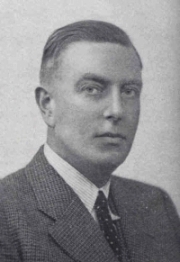
Specialized test equipment had been installed at the copilot’s position. For this reason, Von Baumhauer, rather than the designated copilot, Ferguson, was in the copilot’s seat during this test flight. (Von Baumgartner held a Dutch private pilot certificate, issued 28 November 1931. Since that time, he had flown only 116 hours, and had no experience flying multi-engine aircraft. He was not qualified to act as copilot.)
Guillonard and Von Baumhauer had recommended a series of tests to be conducted on Test Flight No. 19, including observing the airplane’s behavior following an engine cut on takeoff with no rudder input; a series of side slips and stall tests. Von Baumhauer had emphasized “complete stalls” rather than initiating recovery when stall was detected.
After takeoff, NX19901 climbed to 10,000 feet (3,048 meters) and at 140 miles per hour (225 kilometers per hour) a series of static longitudinal stability tests were performed. According to the test flight plan, side slips were to be investigated next.
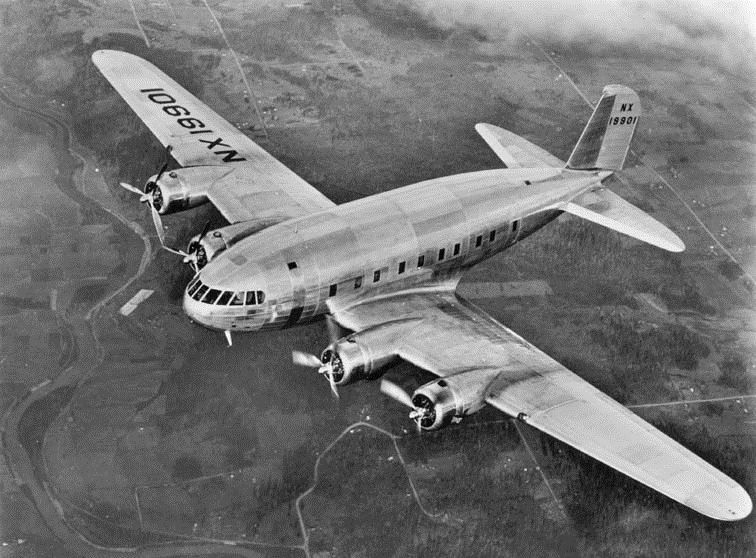
At 1:12 P.M. (PST) a radio message was transmitted from NX 19901 to the Boeing Aircraft Company radio station located at Seattle, Washington, which message gave the position of the aircraft as being between Tacoma Washington and Mount Rainier at an altitude of 11,000 feet. Some two or three minutes later, while flying at a comparatively slow rate of speed in the vicinity of Alder, Washington, the aircraft stalled and began to spin in a nose down attitude. After completing two or three turns in the spin, during which power was applied, it recovered from the spin and began to dive. The aircraft partially recovered from the dive at an altitude of approximately 3,000 feet above sea level, during which recovery it began to disintegrate. Outboard sections of the left and right wings failed upward and broke entirely loose from the aircraft. Major portions of the vertical fin and portions of the rudder were carried away by wing wreckage. The outboard section of the left elevator separated from the stabilizer and both fell to the ground detached. The right horizontal tail surface, being held on by the fairing long the top surface and also by the elevator trim tab cables, remained with the fuselage. The No. 1 engine nacelle also broke loose from the aircraft and fell to the ground separately. The main body of the aircraft settled vertically and struck the ground in an almost level attitude both longitudinally and laterally at a point approximately 1,200 feet above sea level. Watches and clocks aboard the aircraft, which were broken by the force of the impact, indicated the time of the accident at approximately 1:17 p.m. (PST).
—AIR SAFETY BOARD REPORT, at Pages 34–35.
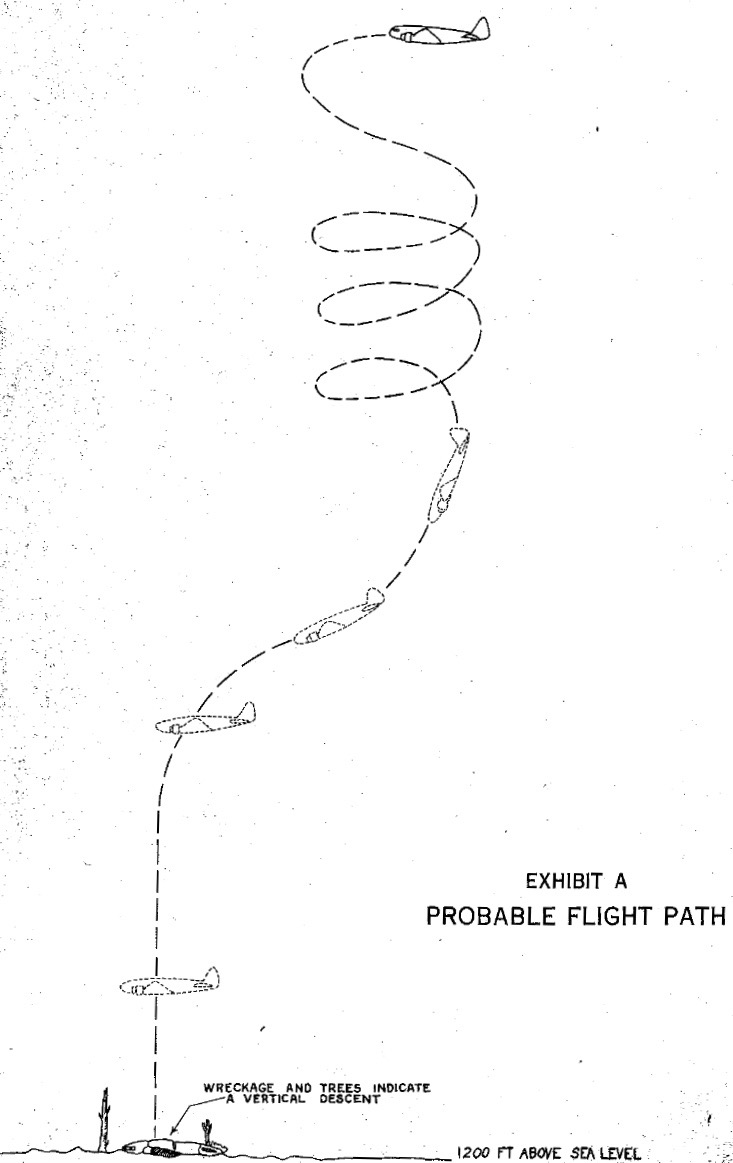
All ten persons aboard were killed in the crash. The Stratoliner was destroyed. Because of the water ballast in the main fuel tanks, there was no post crash fire.
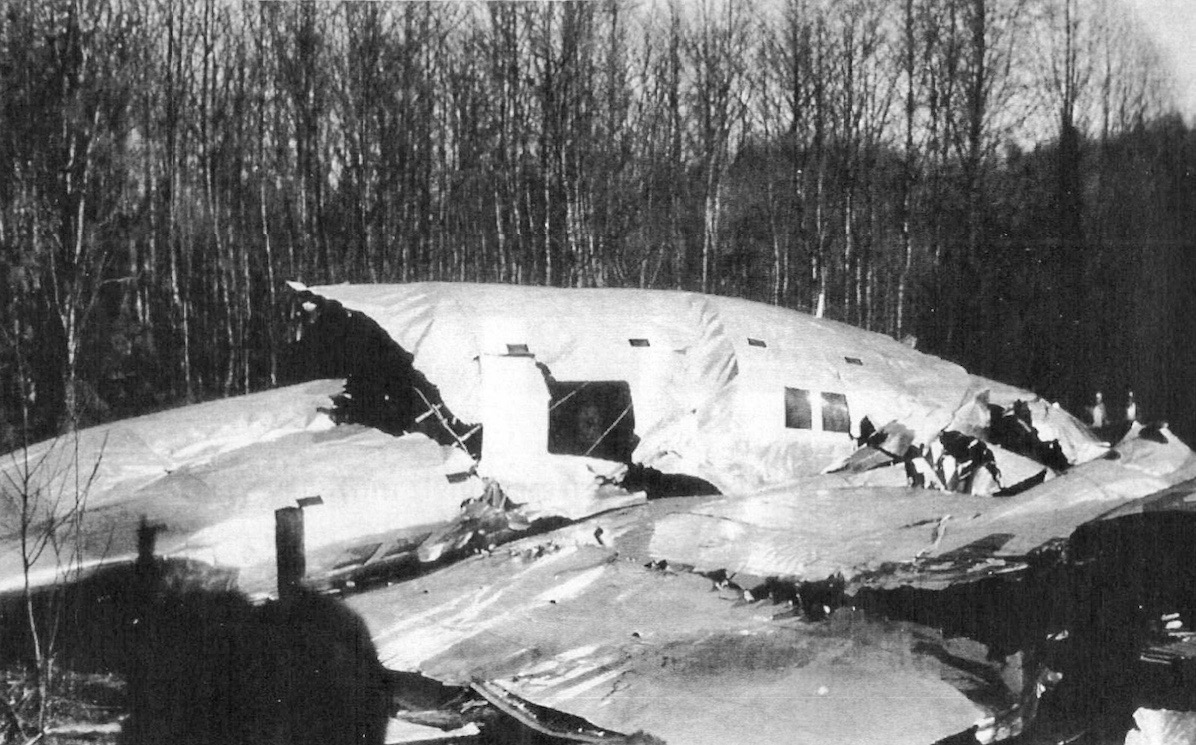
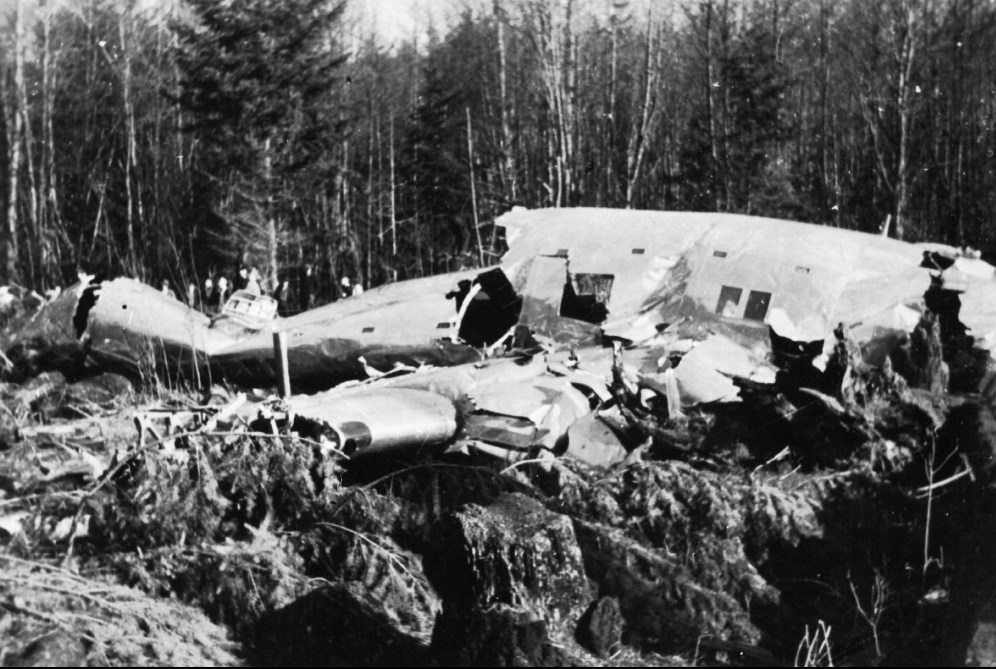
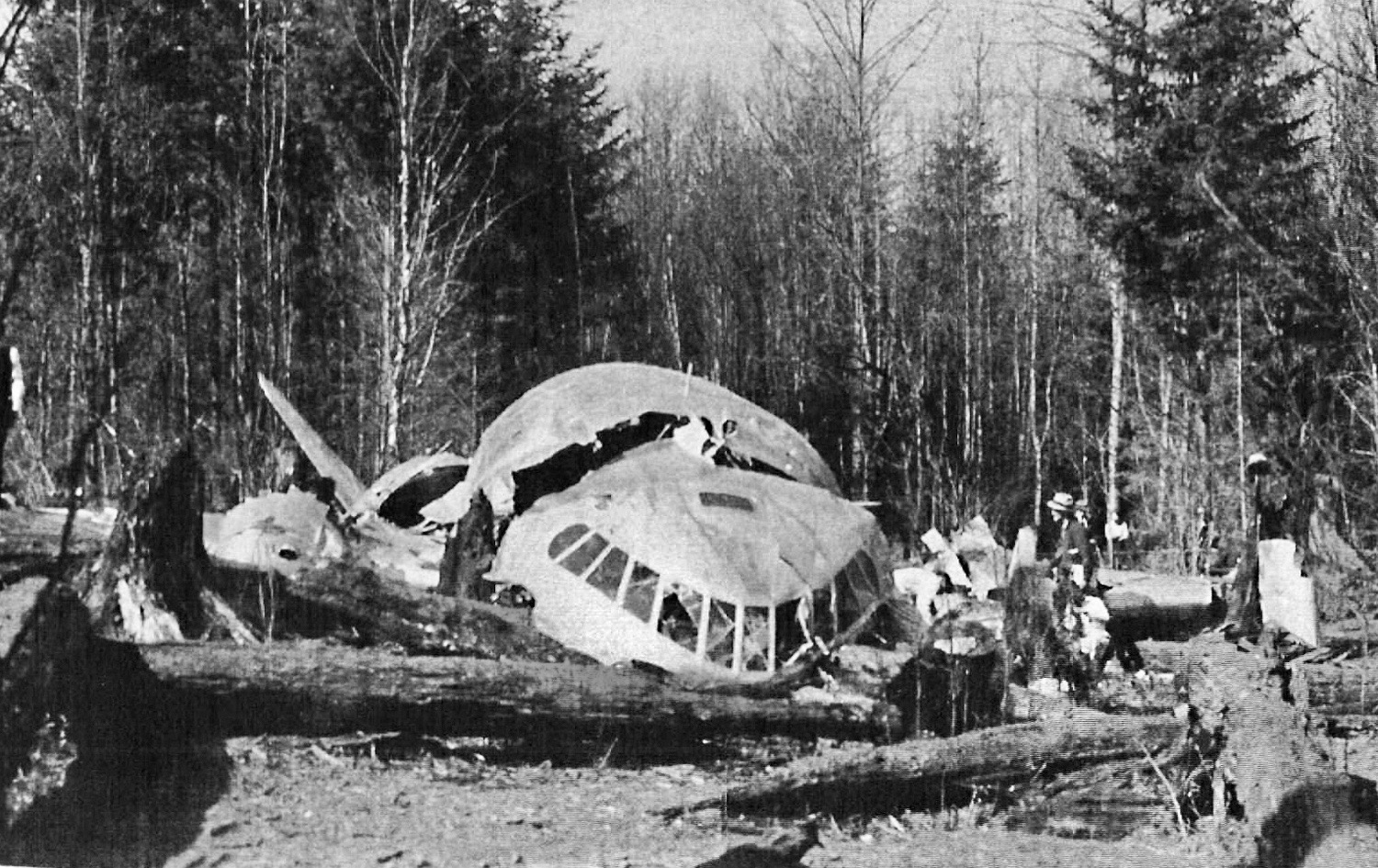
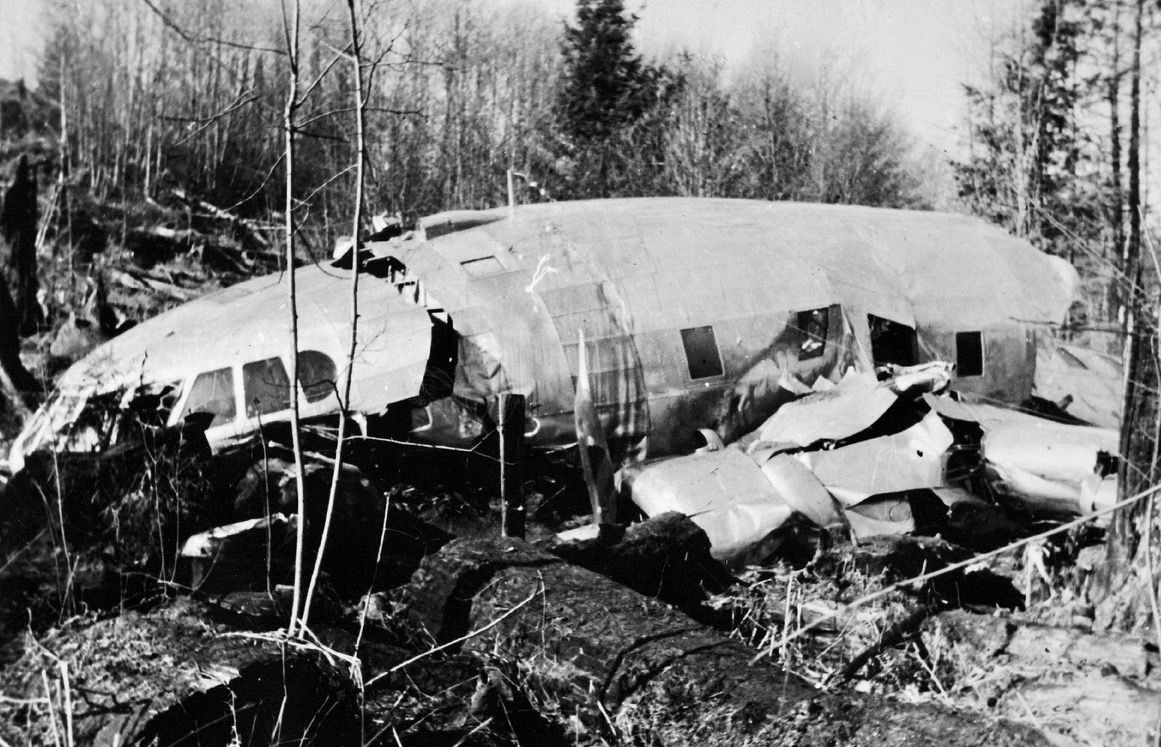
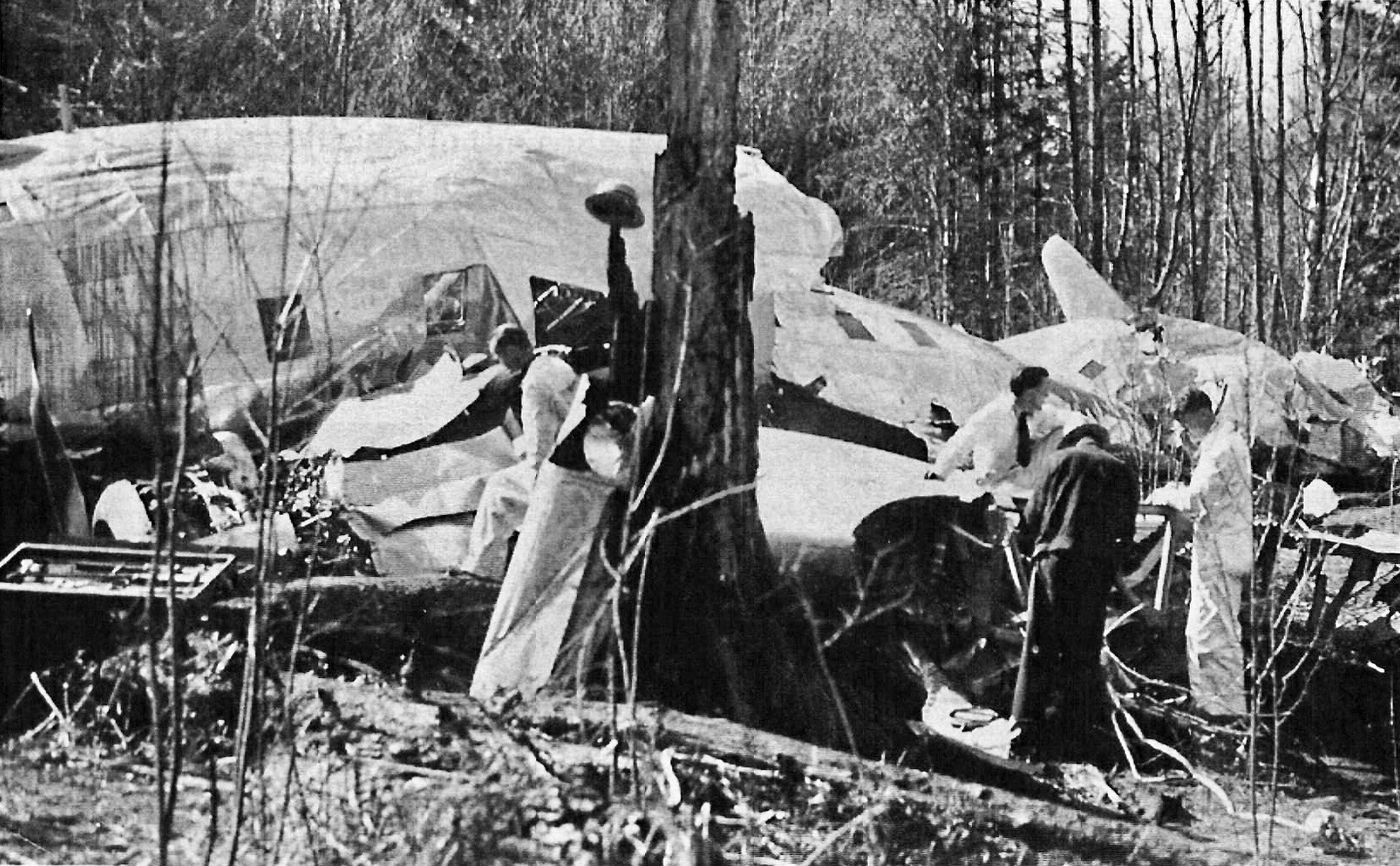
During the crash investigation it was found that two B-17s had previously been spun. The first,
. . . while flying with a gross load of about 42,000 pounds at an altitude of 14,000 feet, went into an inadvertent spin and made two complete turns before recovery was effected. During the pull-out from the ensuing dive, permanent distortion occurred in the structure of both wings, necessitating the installation of new wings on the aircraft.
In the second of these experiences, a similar ship was intentionally permitted to enter a spin following a complete stall. The controls were immediately reversed and the aircraft responded promptly, enabling the pilot to effect recovery after three-fourths of a turn in—
Evidence indicated that power was used in recovery from the spin in the case of NX 19901. It should be noted that in the two instances above described recovery from spin in similar aircraft was accomplished without the employment of power. In one of these cases, permanent distortion occurred in both wings.
—AIR SAFETY BOARD REPORT, at Pages 48 and 49.
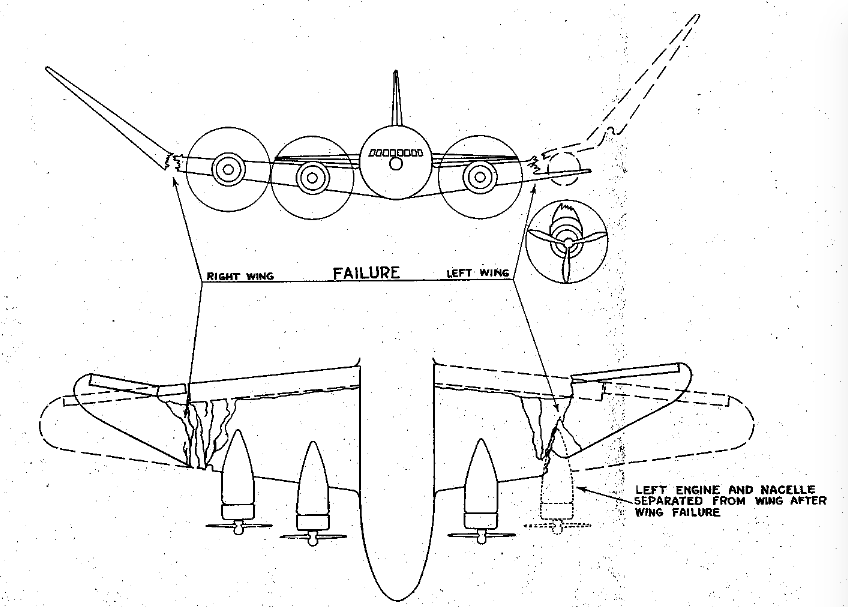
PROBABLE CAUSE
Structural failure of the wings and horizontal tail surfaces due to the imposition of loads thereon in excess of those for which they were designed, the failure occurring in an abrupt pull-out from a dive following recovery from an inadvertent spin.
—AIR SAFETY BOARD REPORT, at Page 56
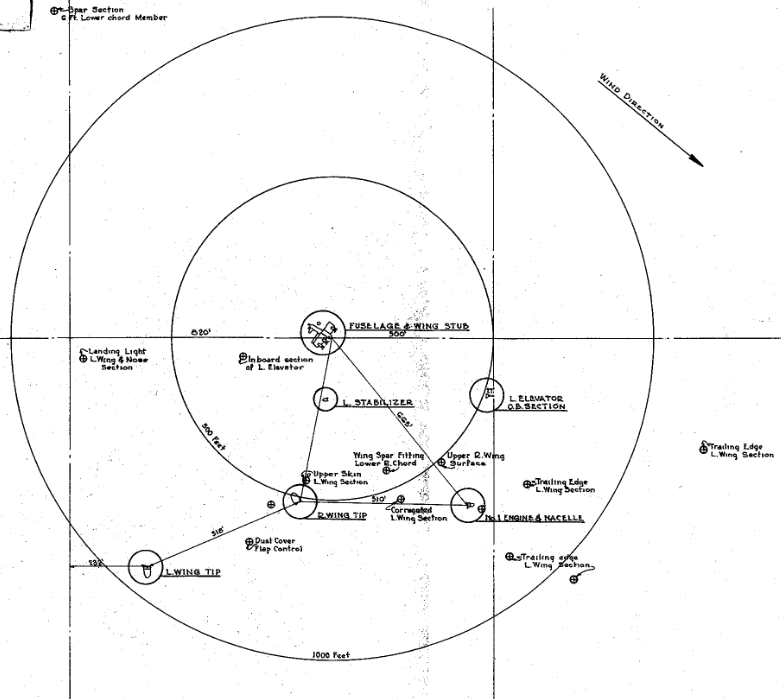
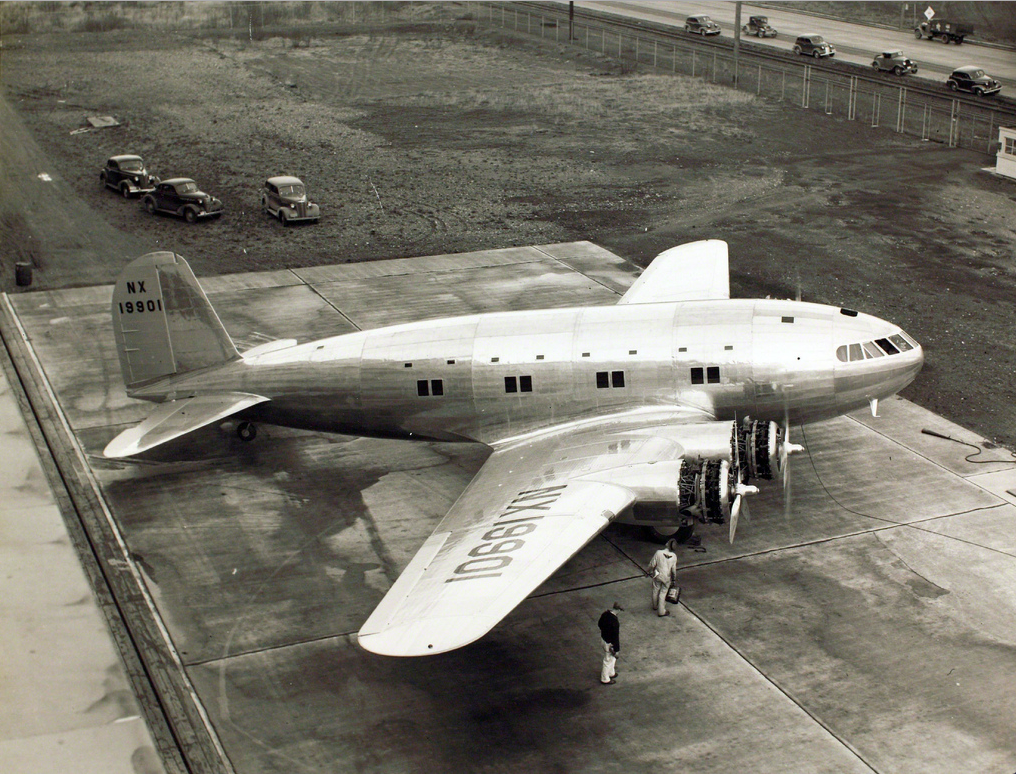
The Boeing Model 307 was operated by a crew of five and could carry up to 33 passengers. It was the first pressurized airliner and, because of its complexity, it was also the first airplane to include a flight engineer as a crew member. It could maintain a cabin pressure equivalent to 12,000 feet (3,650 meters) to a pressure altitude of 19,000 feet (5,791 meters).
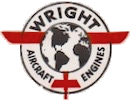 The Model 307 used the wings, tail surfaces, engines and landing gear of the production B-17B Flying Fortress heavy bomber. The vertical fin and rudder were of the same design as the B-17B’s, though somewhat larger. The fuselage was circular in cross section to allow for pressurization. It was 74 feet, 4 inches (22.657 meters) long with a wingspan of 107 feet, 3 inches (32.690 meters) and overall height of 20 feet, 9½ inches (6.337 meters). The wings had 4½° dihedral and 3½° angle of incidence. The empty weight was 29,900 pounds (13,562.4 kilograms) and loaded weight was 45,000 pounds (20,411.7 kilograms).
The Model 307 used the wings, tail surfaces, engines and landing gear of the production B-17B Flying Fortress heavy bomber. The vertical fin and rudder were of the same design as the B-17B’s, though somewhat larger. The fuselage was circular in cross section to allow for pressurization. It was 74 feet, 4 inches (22.657 meters) long with a wingspan of 107 feet, 3 inches (32.690 meters) and overall height of 20 feet, 9½ inches (6.337 meters). The wings had 4½° dihedral and 3½° angle of incidence. The empty weight was 29,900 pounds (13,562.4 kilograms) and loaded weight was 45,000 pounds (20,411.7 kilograms).
The airliner was powered by four air-cooled, geared and supercharged, 1,823.129-cubic-inch-displacement (29.875 liter) Wright Cyclone 9 GR-1820-G102 9-cylinder radial engines with a compression ratio of 6.7:1, rated at 900 horsepower at 2,200 r.p.m., and 1,100 horsepower at 2,200 r.p.m. for takeoff. These drove three-bladed Hamilton-Standard Hydromatic propellers through a 0.6875:1 gear reduction in order to match the engine’s effective power range with the propellers. The GR-1820-G102 was 4 feet, 0.12 inches (1.222 meters) long, 4 feet, 7.10 inches (1.400 meters) in diameter, and weighed 1,275 pounds (578 kilograms).
The maximum speed of the Model 307 was 241 miles per hour (388 kilometers per hour) at 6,000 feet (1,828.8 meters). Cruise speed was 215 miles per hour (346 kilometers per hour) at 10,000 feet (3,048 meters). The service ceiling was 23,300 feet (7,101.8 meters).
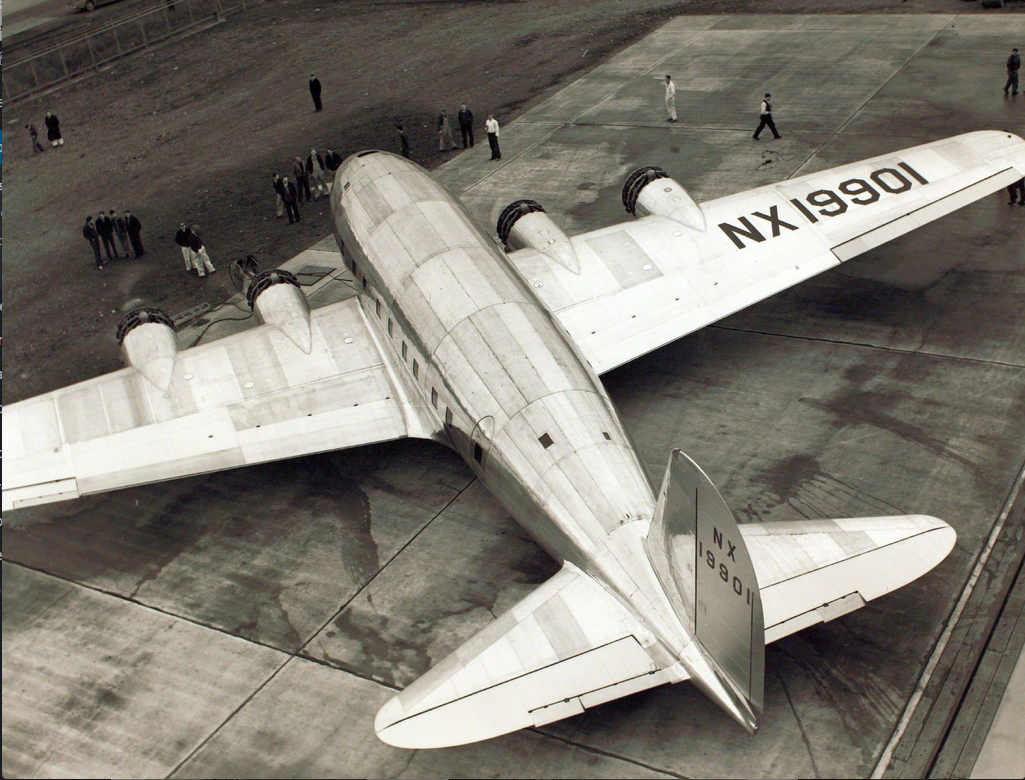
As a result of the crash of NX19901, production Stratoliners were fitted with a vertical fin similar to that of the B-17E Flying Fortress.
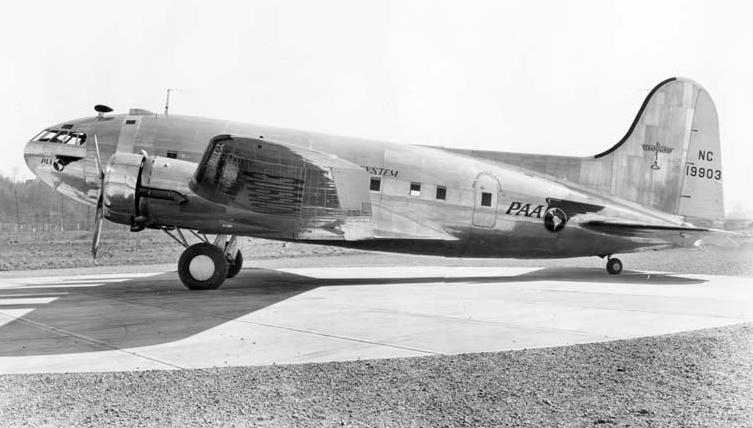
Julius Augustus Barr was born at Normal, Illinois, 6 December 1905. He was the son of Oren Augustus Barr, a teacher and school superintendent, and Margaret M. Wallace Barr. He grew up in Pittsburg, Kansas. He attended the Kansas State Teachers College at Pittsburg in 1925. He was a member of the Alpha Gamma Tau (ΑΓΤ) fraternity, of which he was the treasurer.
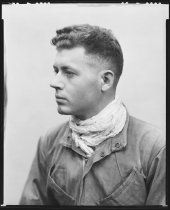
Barr enlisted in the Air Corps, United States Army, and was trained as a pilot at Brooks and Kelly Fields, San Antonio, Texas.
On 1 July 1928, Julius Barr married Miss Effie Hortense Roberson at Pittsburg, Kansas. They would have two children, Jo Anne Barr, and Gene Edward Barr.
In 1930, Barr and his family lived in Cheyenne, Wyoming. He flew as an air mail pilot, and was employed by Boeing Air Transport.
During the mid 1930s, the Barr family traveled to China, where he acted as manager of the airport at Hankow, and conducted flight training. He then flew as the personal pilot of Zhang Xueliang (also known as Chang Hseuh-Liang), (“The Young Marshal”). Zhang and another of other communist generals arrested Chiang Kai-Shek in the Xi’an Incident, December 1936. Chiang was released after two weeks, and Zhang placed under house arrest for the remainder of his life. (The others were executed.) Julius Barr then served as the personal pilot for Soong Mei-ling (“Madame Chiang”), and helped General Chang with the air defense of Shanghai during the Second Sino-Japanese War.
Barr and his family departed Hong Kong aboard S.S. Empress of Russia, which arrived at Victoria, British Columbia, Canada, 14 November 1938. He then went to work as a test pilot for Boeing two days later.
Julius Barr had flown a total of approximately 5,000 hours. Of these, 2,030 hours were in single-engine airplanes, 2,240 hours in twin-engine, and 765 hours in 3 engine.
Julius Augustus Barr was buried at the Mount Olive Cemetery, Pittsburg, Kansas.
© 2019, Bryan R. Swopes
Great write-up Bryan. keep up the good work
Thank you, Thomas. 🙂
Sad to read of these accidents and the assessments always bring up the questions about if only this or only that !
However I much enjoyed your well done presentation. Thanks very much.
Thank you, Don.
Is this in any way implying Barr was not in command of the aircraft and Von Baumhauer was or if Ferguson had been where he should have been perhaps the results would have been different? Thank you
Barr was in command of the aircraft, but it seems that Baumgartner was directing the tests. He should not have been flying the aircraft.
Thank you for this interesting story.
Thank you, John.
BRYAN
GREAT AVIATION HISTORY OF “ BEYOND THE LIMITS OF REQUIRED TESTING”! AND WHAT LIMITS TO TEST TO!
MORE STORIES PLEASE!
THANKS LARRY
Thank you, Larry.
I once read that the aftermath of this crash, in which KLM’s technical director Pieter Guillonard perished, was one of the reasons KLM for the next 30 years never considered buying Boeing planes. They mainly flew Douglas planes (with a few exceptions like the Lockheed Electra and Vickers Viscount), until the purchase of the Boeing 747 in 1969. KLM is the only airline that has operated all Douglas models from the DC-2 to the MD-11, including the rare DC-5. Can’t find the source at the moment. If I come across it again, I will add it.
Thank you, Richard. Interesting.
Well researched, well written. Thank you.
Thank you very much, Mark.